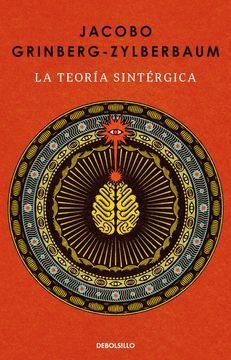
Exploring Jacobo Grinberg's Theory on Consciousness and the Universe
July 9th, 2024
00:00

00:00
Summary
- Introduction to 'Teoría Sintérgica' by Jacobo Grinberg-Zylberbaum
- Theory connects consciousness with the universe through an information lattice
- Our thoughts and consciousness shape reality
- Brain functions like a neuron in the universe's vast nervous system
- Meditation and thought control can materially influence reality
Sources
In the groundbreaking work Teoría Sintérgica, Jacobo Grinberg-Zylberbaum presents a compelling exploration of consciousness and its profound connection with the universe. This theory posits that our thoughts are the initial locus of creation within our minds, which then manifest as our individual realities, regardless of others perceptions. This unique perspective suggests that each person lives in a seemingly different reality, shaped by their own mind and thoughts. Grinberg elaborates that the universe operates like a vast, interconnected network, akin to a hypercomplex nervous system, which he refers to as the Lattice. In this system, the human brain functions similarly to a neuron within this expansive network. The Lattice is not just a metaphorical construct but a tangible entity that interacts dynamically with our thoughts and consciousness. By aligning our mental processes through practices such as meditation, we can synchronize our minds with this universal network. This synchronization allows for the actualization of thoughts into reality, fundamentally stating that to believe is to create. Moreover, Grinberg introduces the concept of the brain’s ability to alter the Lattice by creating energetic conformations known as visual images. This implies that everything one perceives is essentially a reflection of their inner expectations and desires, influenced directly by their thoughts. The theory advocates for the purging of negative or unloving thoughts, which could disrupt the harmony of the Lattice and, by extension, the reality one experiences. Central to Grinbergs theory is the notion that what we consider as empty space is actually a hypercomplex mesh of information, interconnecting all elements of the universe. This mesh acts like a box of surprises which, if navigated correctly through the refined use of our senses and mind, could allow for the materialization of favorable objects and circumstances in ones life. Teoría Sintérgica not only challenges the conventional understanding of space and reality but also offers a transformative approach to perceiving and interacting with the universe. By mastering our thoughts and achieving a mental state in sync with the Lattice, we possess the potential to shape our reality, turning belief into existence. This theory intertwines the psychological and the physical realms, suggesting that our collective consciousness can lead to tangible changes in the world around us. Through this understanding, Grinberg-Zylberbaum not only explores the depths of individual consciousness but also its implications on a universal scale. Building upon the foundational principles of Teoría Sintérgica, it becomes essential to understand the detailed mechanics through which this theory elucidates the interaction between human consciousness and the universe. At the core of this theory is the concept of the Lattice, likened to a vast nervous system encompassing the universe, within which the human brain functions analogously to a neuron. This conceptualization not only highlights the interconnectedness of all existence but also posits the brain as a critical node that interacts with, influences, and is influenced by this universal network. The synchronization of the human mind with the Lattice is facilitated significantly through meditation. Meditation serves as a tool to clear the mind, allowing individuals to align their mental frequencies with those of the Lattice. By achieving this synchronicity, individuals can effectively tune in to a higher frequency of existence, which is ripe with possibilities and potential manifestations. This process is not passive but requires active control and direction of ones thoughts and feelings. The focused energy and attention enable the practitioner to resonate with the frequencies of desired outcomes, essentially allowing them to materialize thoughts into reality. This interaction is not merely about wishful thinking but involves a profound understanding and manipulation of the energetic conformations within the Lattice. By directing thoughts in a structured and intentional manner, the brain can create visual and energetic imprints on the Lattice. These imprints then influence the informational mesh of the universe, leading to the manifestation of specific conditions, objects, or circumstances in the physical world. It underscores the principle that the quality and nature of our thoughts directly impact the material reality we experience. Moreover, this theory enhances the understanding of human potential and the power of the mind. It suggests that individuals are not merely passive observers of reality but active participants who can shape their environment through mental focus and clarity. The practice of aligning ones thoughts with positive, constructive, and harmonious frequencies is emphasized as crucial for effective manifestation. This alignment fosters not only personal fulfillment but also contributes to the collective energy that shapes the broader existential experience. In essence, the mechanics of Sintergia within the Teoría Sintérgica offer a transformative and empowering view of human capability. It bridges the gap between the metaphysical and the physical, suggesting that through mental discipline and meditative practices, individuals can engage with the universe in a manner that brings about tangible and positive changes in their lives and the world around them. By mastering these principles, one learns to navigate and co-create within the intricate and dynamic lattice of universal consciousness.